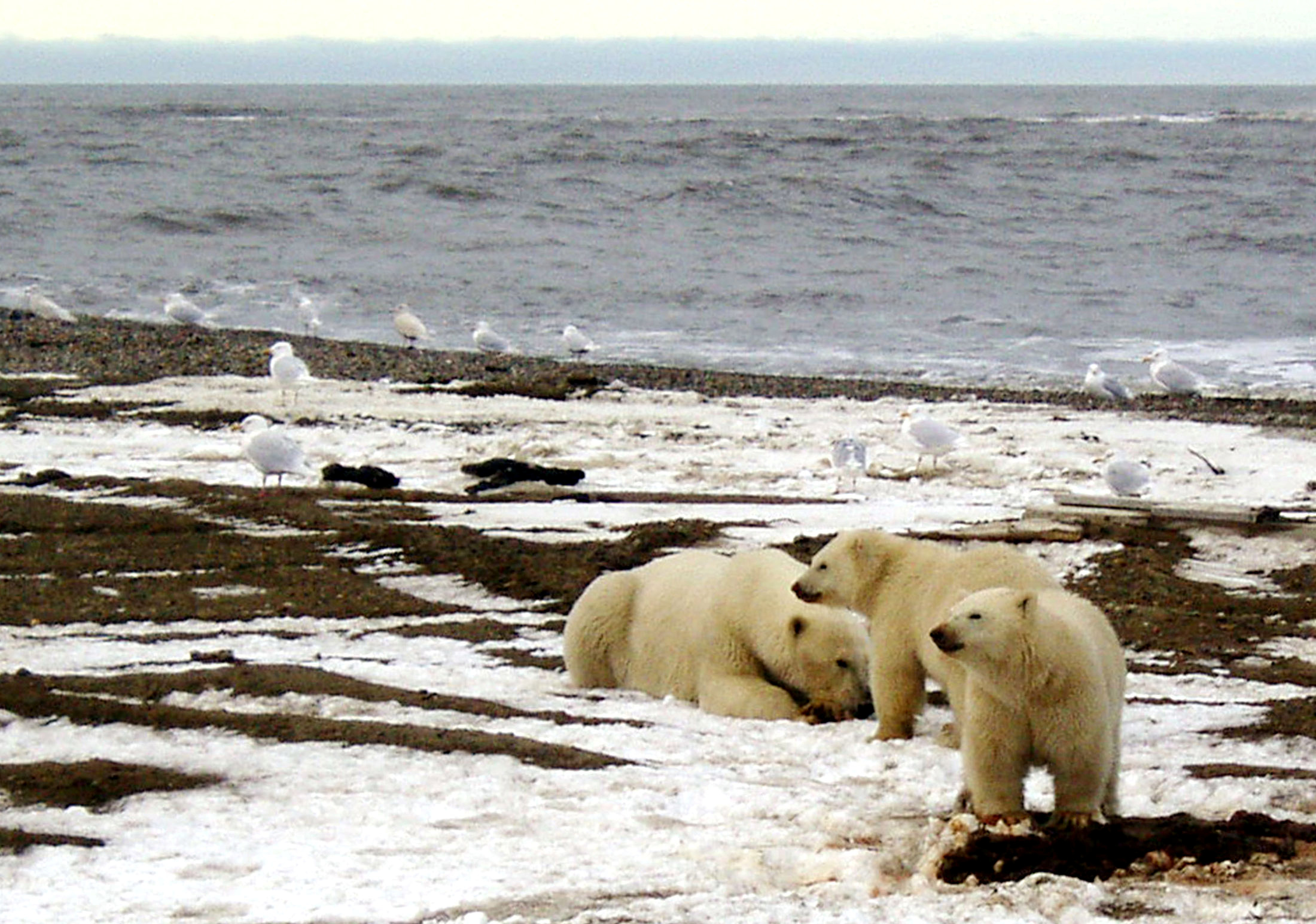Study tracks Arctic animals’ exposure to disease better known in Interior Alaska: tularemia
The disease is more commonly associated with rabbits and hares.

A wide variety of Arctic animals including polar bears are being exposed to a tick-borne pathogen normally associated with rabbits and hares, a newly published study said. The findings are intended to help scientists track what is expected to be a northward spread of the disease into the warming Arctic.
The study, led by scientists from the U.S. Geological Survey, examines signs of exposure to the bacterium that causes tularemia, a disease often called “rabbit fever.”
Arctic foxes and Arctic ground squirrels showed the highest levels of seroprevalence — the percentage with antibodies in the blood to fight tularemia — among the Arctic coastal species tested, the study found. The Arctic foxes and ground squirrels had 21.2 percent and 33.3 percent seroprevalence, the study said.
Caribou showed low levels, with 6.5 percent seroprevalence, and polar bears’ seroprevalence fell about at the study’s midpoint, at 13.3 percent, the study said.
Animals tested included mammals of varying sizes and three types of nesting geese. Blood serum samples were collected from 2014 to 2017, and the study area was the Arctic coastline from the area around Utqiagvik, the nation’s northernmost community, to the Canadian border.
Seroprevalence does not mean the animals ever had tularemia, only that they were exposed to the bacterium, said Matthew Smith, the USGS geneticist who is the study’s lead author.
The study is part of a broader USGS project to track the spread of diseases and disease pathogens among wildlife in the rapidly warming Arctic. For the most part, this study provided baseline information about a subject that has not much been studied on the Arctic Alaska coast, said Smith, who works at the USGS Alaska Science Center in Anchorage.
But even if they cannot show any trends, the findings about exposure on the Arctic coast to the tularemia bacterium — Francisella tularensis — are significant, Smith said. “It appears to be more common than previously thought,” he said.
In Alaska, snowshoe hares are considered the reservoir for tularemia, Smith said. Disease outbreaks are concentrated in Fairbanks and elsewhere in the Interior, according to the Alaska Department of Fish and Game.
Snowshoe hares are found as far north as the Colville River Delta on the Arctic coast, though there is mixed information about whether snowshoe hares are more plentiful there now than they were in the past. Nonetheless, the region is clearly becoming more hospitable to snowshoe hares, said Ken Tape, a University of Alaska Fairbanks ecologist. “What we know is their habitat is increasing across the tundra habitat of Alaska,” said Tape, who was not involved in the tularemia study. He has, instead, been studying various animal species, including beavers and moose, that are becoming established in farther-north areas as woody shrubs take root on the tundra.
There are signs in the new study and others that climate change is causing Alaska polar bears to become increasingly at risk of tularemia. The average 13.3% seroprevalence for the tested polar bears in the new study compares to an average 4.8% seroprevalence level found in a 2017 USGS-led study that examined Southern Beaufort Sea polar bears for exposure to multiple wildlife diseases.
Additionally, a 2021 study of polar bears in Canada’s Hudson Bay — a population known for spending much of its life on land — showed signs of increasing exposure of those bears to several wildlife diseases normally associated with terrestrial animals.
All that information combines to raise an obvious question about Alaska polar bears’ adjustment to diminished sea ice, Smith said: “If they’re spending more time on land, are they being exposed to disease or a host of diseases that they wouldn’t be otherwise?”
As for the geese examined in the project, he said, the study provided the first documentation of F. tularensis-exposure antibodies in those three species — greater white-fronted geese, lesser snow geese and black brant.
There has been very little tularemia-focused testing of Arctic-nesting birds in Alaska or other polar regions, so the information about antibodies in geese is an important addition to the record, the study authors said.
During past outbreaks of tularemia, as in 2020 in the Fairbanks area, the Department of Fish and Game has warned people that their pet animals can pick up the disease from infected hares or rodents.
Tularemia can spread to people, too, but that happens only rarely. There have been few documented human tularemia cases in Alaska, though there is evidence that some subsistence hunters can be exposed to the pathogen. For people, symptoms of tularemia include skin ulcers, sore throats and in the most serious cases, pneumonia-like coughs, chest pain and breathing difficulties, according to the Centers for Disease Control and Prevention.
This article has been fact-checked by Arctic Today and Polar Research and Policy Initiative, with the support of the EMIF managed by the Calouste Gulbenkian Foundation.
Disclaimer: The sole responsibility for any content supported by the European Media and Information Fund lies with the author(s) and it may not necessarily reflect the positions of the EMIF and the Fund Partners, the Calouste Gulbenkian Foundation and the European University Institute.
